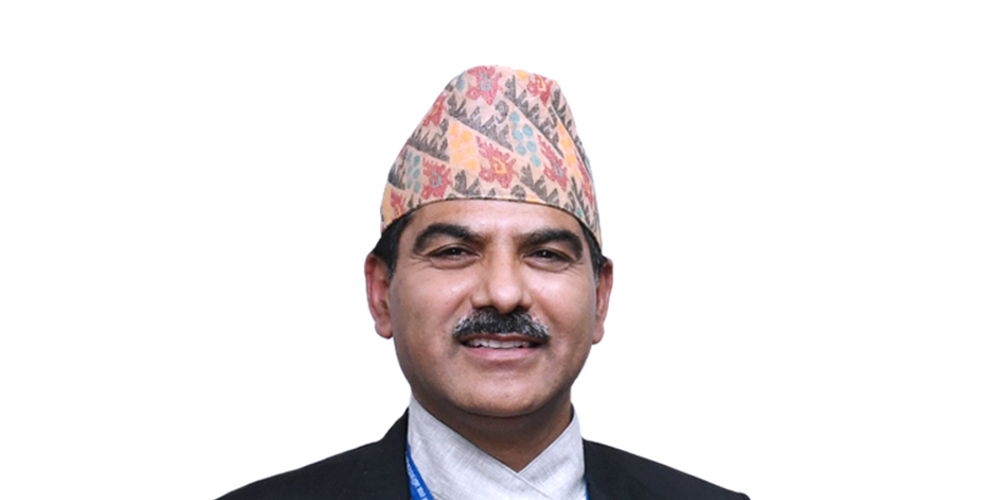Economic growth rate of NEPAL likely to decline to 3.7pc

Kathmandu October 6- Nepal’s growth rate has been projected to decline to 3.7 percent in the FY 2015/16 due to numerous problems that took a toll on the country’s economic activity after the April 25 earthquake, the World Bank (WB) said. The government had set an ambitious 6 percent growth target for this FY, backed by donor aid pledges totaling $4.4 billion for Nepal’s reconstruction effort.
The WB said in its South Asia Economic Focus Fall 2015 report released on Sunday that Nepal’s growth prospects had been dampened by the effects of the earthquake, sub-optimal paddy planting season, slowed tourist arrivals, increased protests and nationwide strikes, and delays in adopting the budget and establishment of the National Reconstruction Authority, especially in the early part of the year.
It said that Nepal’s growth was expected to pick up to 5.5 percent in 2016/17 on the base of increased public and private investments if the political process stabilized and the quake recovery process speeded up in earnest.
The massive earthquake of April 5 put a heavy toll on economic activity. From an expected 5 percent, GDP growth dropped to 3.4 percent in 2014-15. Although macroeconomic fundamentals were strong prior to the earthquake, the slowdown is expected to continue for at least one additional fiscal year,” the report said.
Tourism arrivals could be disappointing in the first half of 2015 due to the earthquake and associated decline in bookings. Agriculture is projected to grow at its historic rate of 2 percent.Economic growth will only pick up at the end of 2018 when new hydropower projects come on stream, it said. Consumer inflation will closely follow India’s tracks. The current account deficit is expected to continue growing over the next years, driven by the construction of hydropower projects.
The current account deficit outside the hydropower sector is expected to remain stable, supported by a robust growth in the tourism sector. Fiscal policy is assumed to remain in balance, supported by donor grants, with current spending contained, and capital spending following the patterns of the five-year plan disbursements. The revenue effort is expected to weaken slightly, unless new measures to strengthen the tax base are introduced.
“Policy (political) risk remains an important factor in the region’s structural reform equation, and may boost or dampen progress. Nepal’s constitutional process appears very close to final fruition, yet political agreement among major parties in the aftermath of the earthquakes is fragile.”
With spontaneous unrest and violence erupting in parts of the country in response to the proposed demarcation of future provinces, the transition to the new federal structure remains challenging, the report said. “In addition, the largest four political parties forged an agreement to adopt a new constitution after eight years of deliberations, paving the way for a new chapter in the country’s history. However, progress remains fragile.”
Nepal remains an outlier on fiscal performance, but this is mainly the result of inefficient execution of investment expenditure. Fiscal surplus before the earthquake had constantly been on account of persistent under-implementation of public investment projects. More recently and as a direct result of the earthquakes, Nepal missed its revenue target for 2014-15 for the first time in several years.
The Post Disaster Needs Assessment (PDNA) estimated the value of physical damage at $5.2 billion with an additional $1.9 billion in economic losses. Fortunately, before the disaster struck, Nepal’s macroeconomic fundamentals were in good shape. Both external and fiscal accounts were in surplus for several years, while public debt was low and declining. While not optimal, this was achieved on the back of large inflows of remittances, equivalent to 29 percent of GDP in 2014-15, that have offset the gaping trade deficit, while persistent under-implementation of capital expenditure has kept the fiscal accounts in surplus. Remittances grew 12 percent in 2014-15, even though the outflow of migrant workers declined by 1 percent for the first time since 2009. Source: The Kathmandu Post

"There are mixed results in half-yearly budget progress"

Total government spending amounts to Rs. 667.60 billion in 6 months

"There are promising signs of economic recovery"

Finance Minister Paudel directs to meet revenue target

Suspended Chief Secretary Aryal acquitted in corruption case

Dhakal elected HCCN Dean

Price of salt goes up







Feedback